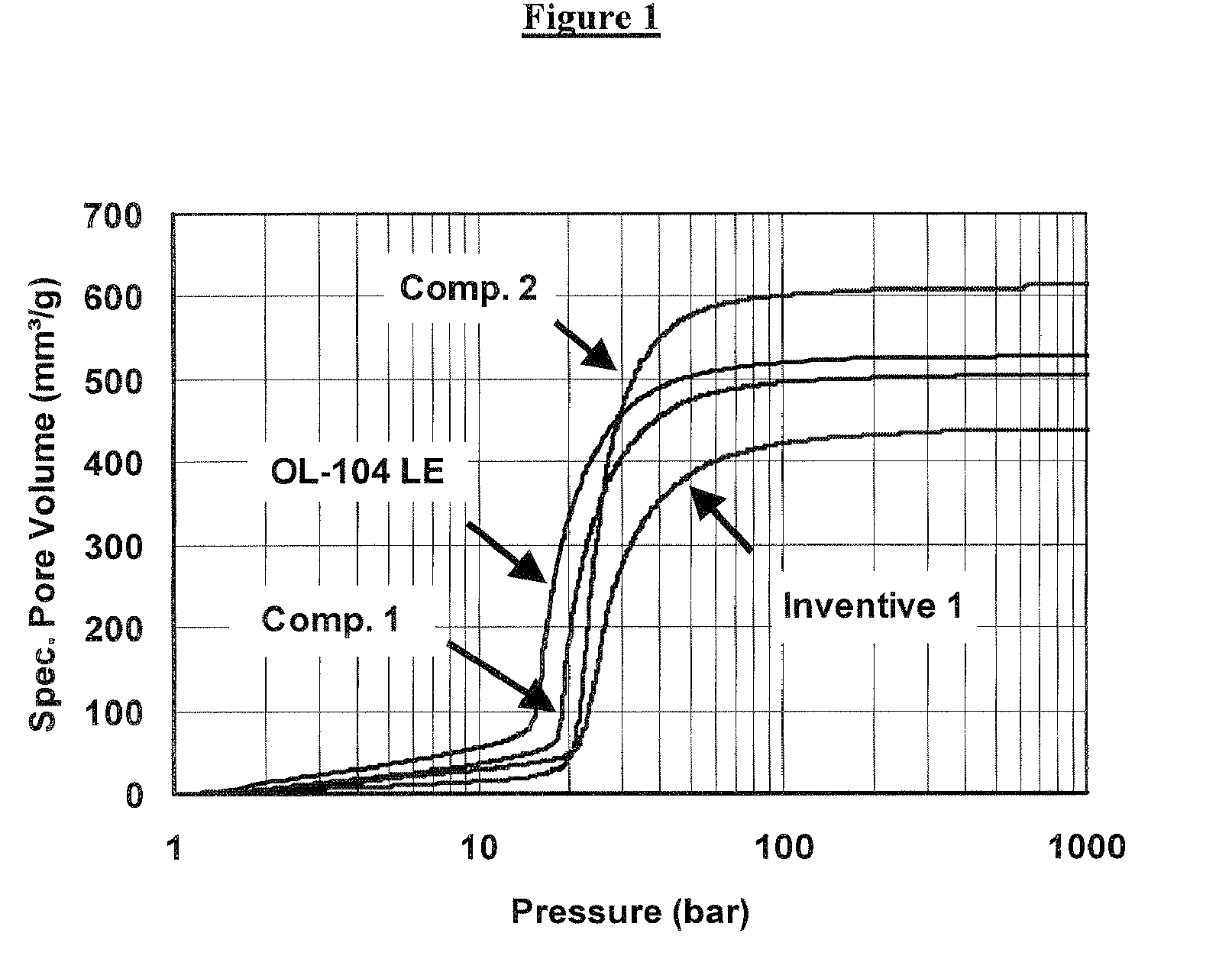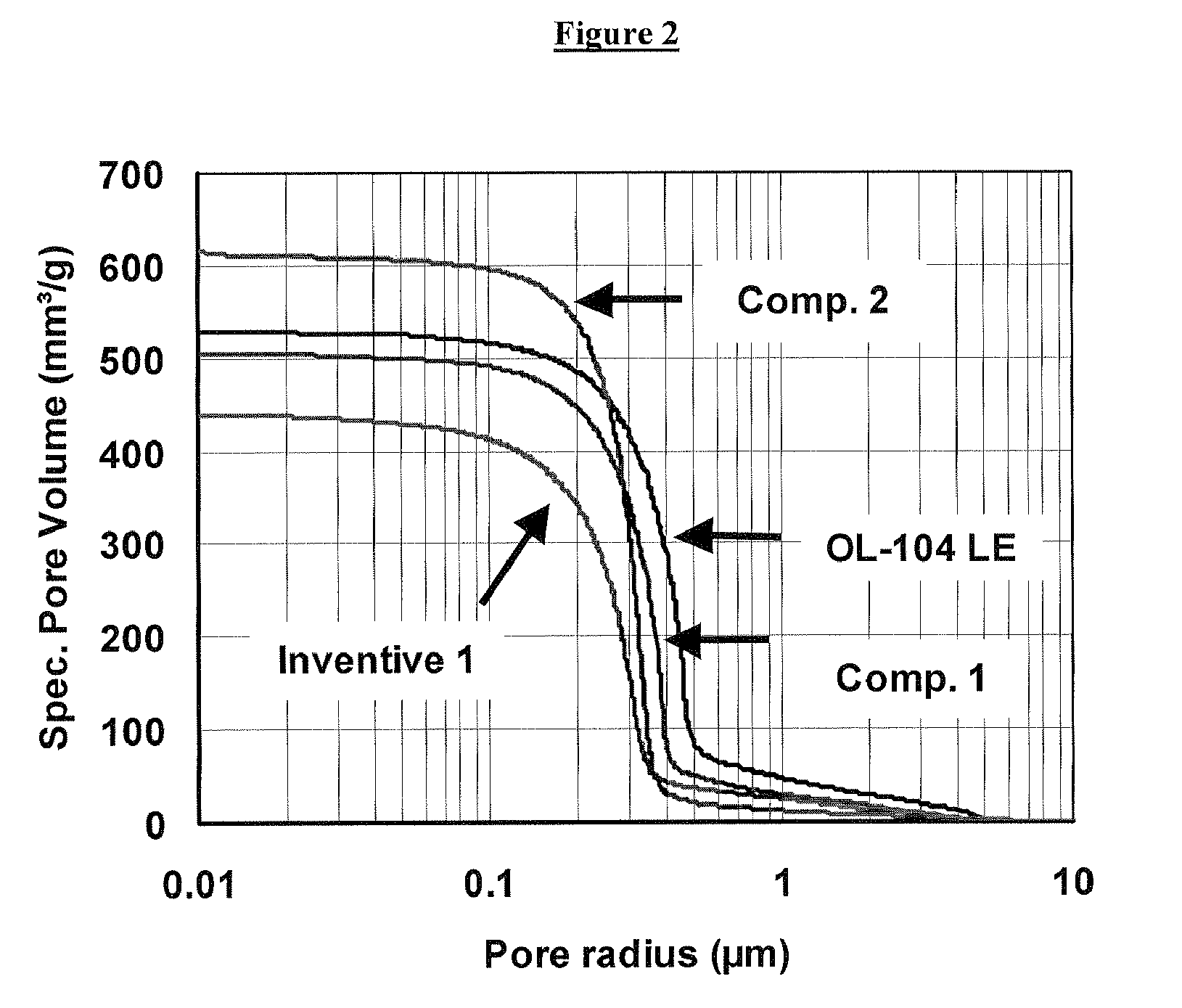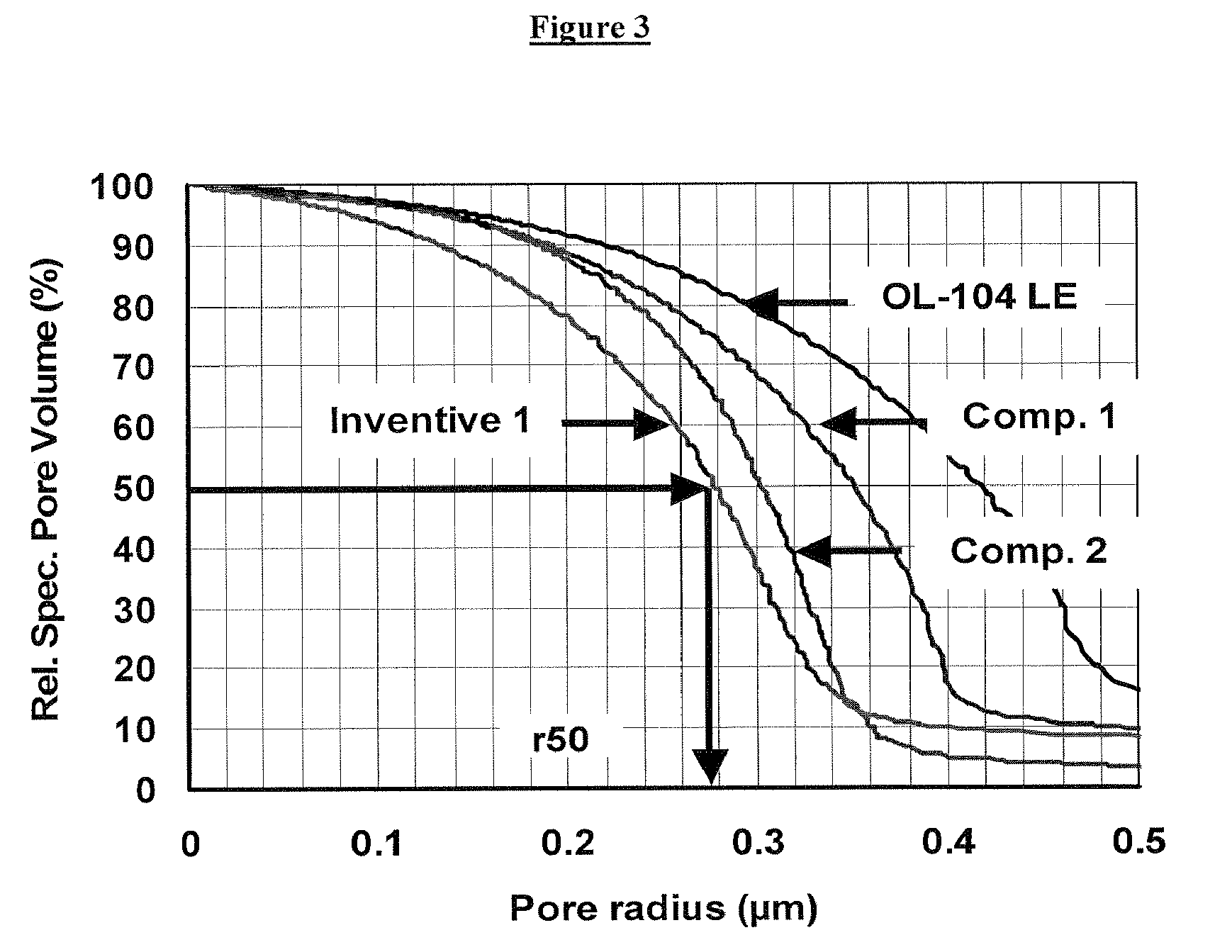Process for the production of aluminum hydroxide
a technology of aluminum hydroxide and aluminum hydroxide, which is applied in the field of new aluminum hydroxide flame retardants, can solve the problems of low throughput, moderate compound quality, and considerable risk of damage to the engine of the compounding machine, and achieves better wettability, poor wettability, and high throughput.
- Summary
- Abstract
- Description
- Claims
- Application Information
AI Technical Summary
Benefits of technology
Problems solved by technology
Method used
Image
Examples
example 1
[0059]By seeding a pregnant sodium aluminate liquor as e.g. disclosed in EP 1 206 412 B1, a synthetic aluminium hydroxide grade with a median particle size of d50=2.43 μm and a specific surface of 2.6 m2 / g was produced. Common separation and filtration techniques were used to separate said synthetic aluminum hydroxide; after subsequent washing steps on belt filters, the resulting aluminum hydroxide filter paste with a solid content of 61 wt. % was liquefied by adding a sufficient quantity of the dispersing agent Antiprex A40 from Ciba until the viscosity of the slurry was about 150 cPoise. The slurry was fed into a pearl mill, type KD 200 D from Bachofen / Switzerland. This mill contained 270 kg of small beads made of zirconium oxide with a diameter of 0.6 mm. The throughput of the mill was controlled so that after drying by means of a Niro F 100 spray drier and conveying of the inventive aluminum hydroxide into a silo the resulting d50 was 1.89 μm and the specific surface was 4.9 m2 / ...
example 2
Comparative
[0060]The product properties of the comparative aluminum hydroxide grade Martinal OL-104 LE produced by Martinswerk GmbH and the product properties of two competitive aluminum hydroxide grades “Competitive 1” and “Competitive 2” are also shown in Table 1.
[0061]
TABLE 1MaximumMedianSpecificMedian porespecific poreparticle sizeBETradius (“r50”)volume Vmaxd50surface(μm)(mm3 / g)(μm)(m2 / g)Comparative0.4195291.833.2ATH OL-104 LEComparative 10.3535041.523.2Comparative 20.3036151.614.0Inventive ATH0.2774391.894.9grade no. 1
[0062]As can be seen in Table 1, the inventive aluminum hydroxide grade no. 1, an ATH according to the present invention, has the lowest median pore radius and the lowest maximum specific pore volume.
example 3
[0063]By seeding a pregnant sodium aluminate liquor as e.g. disclosed in EP 1 206 412 B1, a synthetic aluminium hydroxide grade with a median particle size of d50=2.43 μm and a specific surface of 2.6 m2 / g was produced. Common separation and filtration techniques were used to separate said synthetic aluminum hydroxide; after subsequent washing steps on belt filters, the resulting aluminum hydroxide filter paste with a solid content of 61 wt. % was liquefied by adding a sufficient quantity of the dispersing agent Antiprex A40 from Ciba until the viscosity of the slurry was about 150 cPoise. The slurry was fed into a pearl mill, type KD 200 D from Bachofen / Switzerland. This mill contained 270 kg of small beads made of zirconium oxide with a diameter of 0.6 mm. The throughput of the mill was controlled so that after drying by means of a Niro F 100 spray drier and conveying of the inventive aluminum hydroxide into a silo the resulting d50 was 1.44 μm and the specific surface was 6.7 m2 / ...
PUM
| Property | Measurement | Unit |
|---|---|---|
| density | aaaaa | aaaaa |
| diameter | aaaaa | aaaaa |
| median pore radius | aaaaa | aaaaa |
Abstract
Description
Claims
Application Information
 Login to View More
Login to View More - R&D
- Intellectual Property
- Life Sciences
- Materials
- Tech Scout
- Unparalleled Data Quality
- Higher Quality Content
- 60% Fewer Hallucinations
Browse by: Latest US Patents, China's latest patents, Technical Efficacy Thesaurus, Application Domain, Technology Topic, Popular Technical Reports.
© 2025 PatSnap. All rights reserved.Legal|Privacy policy|Modern Slavery Act Transparency Statement|Sitemap|About US| Contact US: help@patsnap.com



